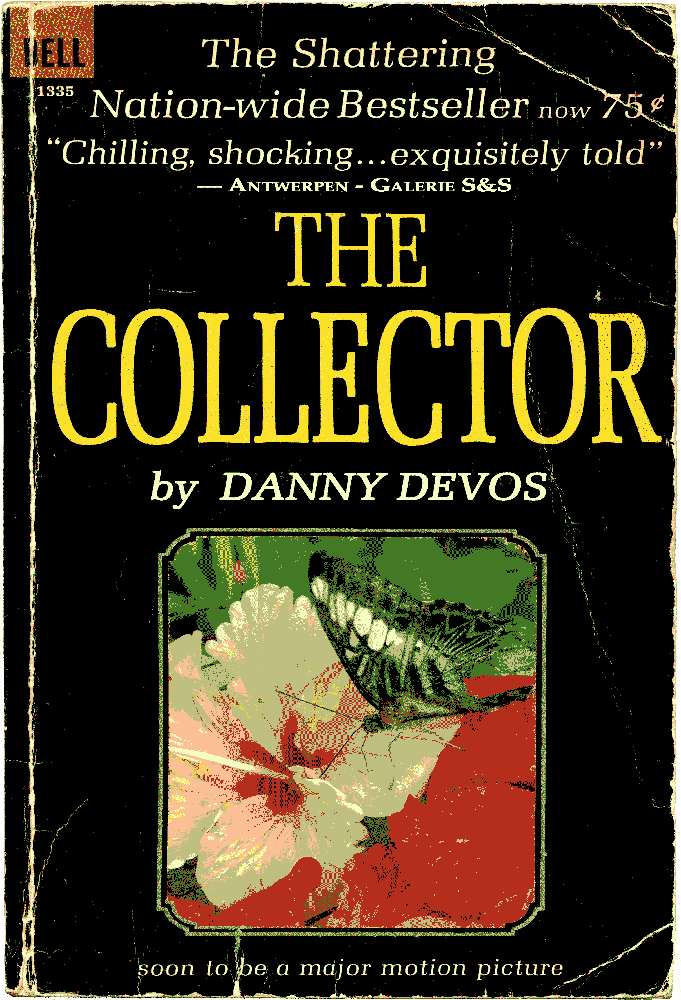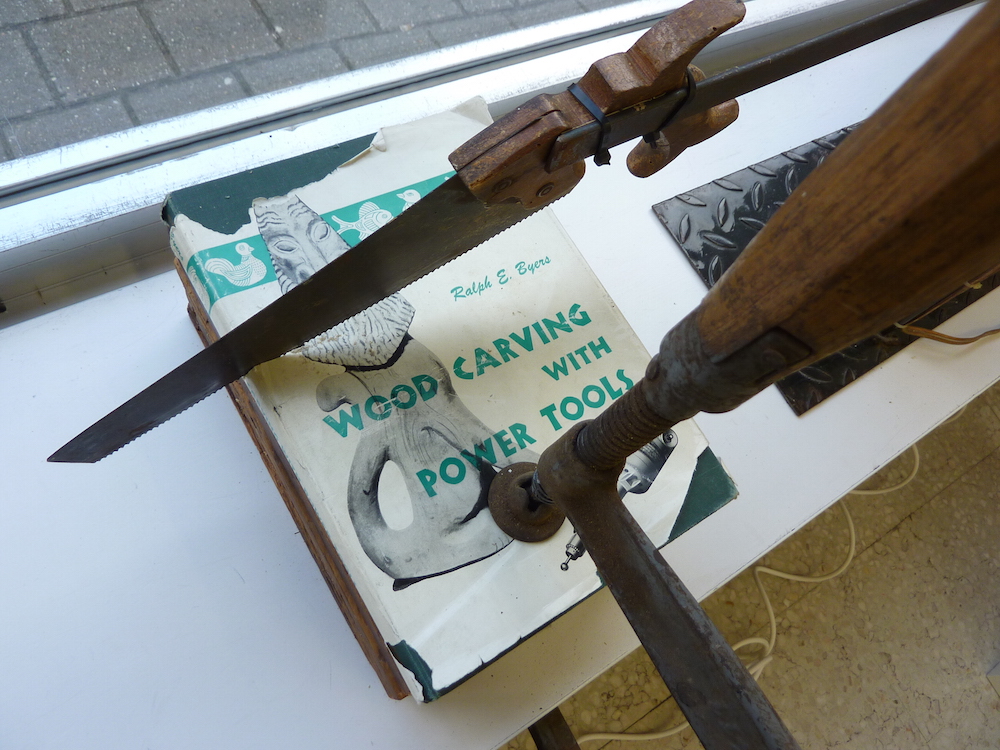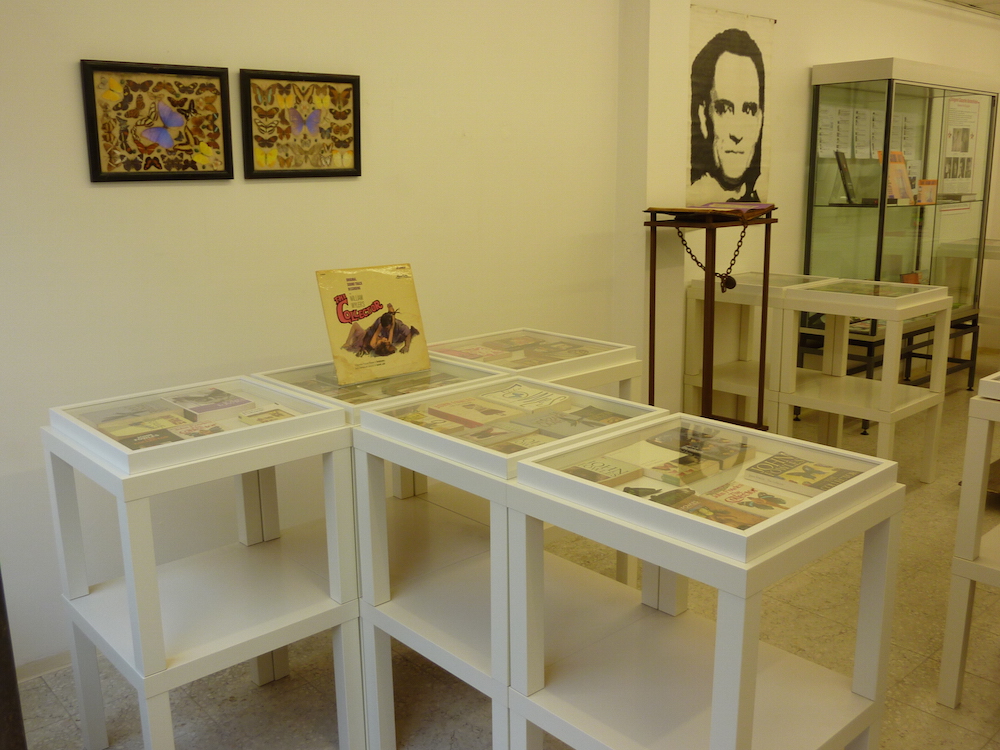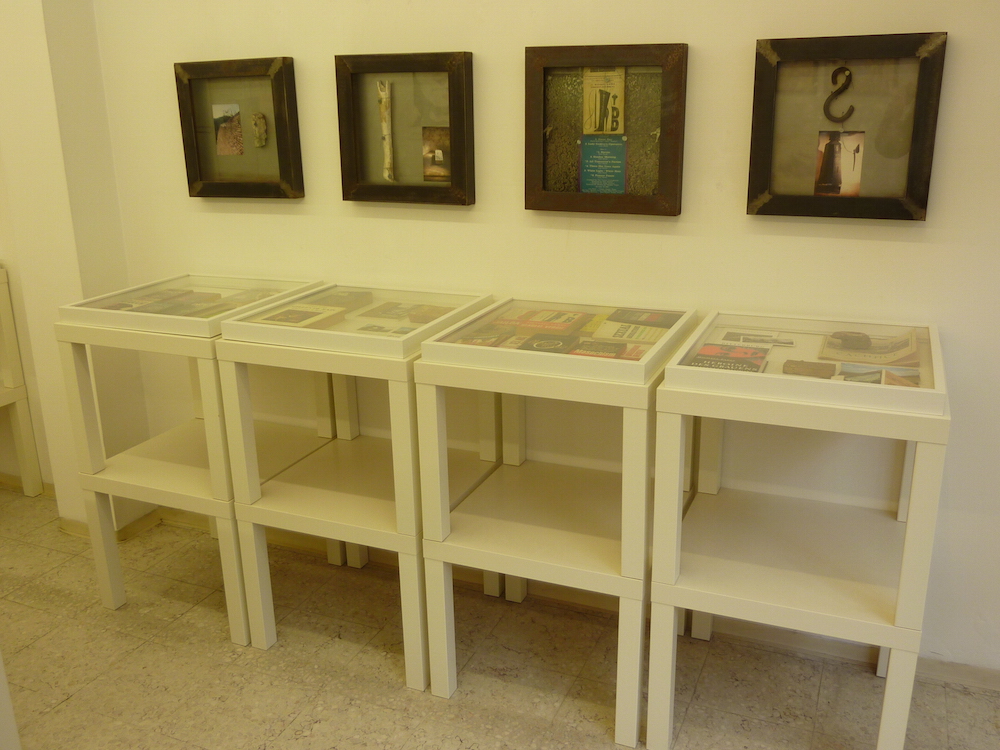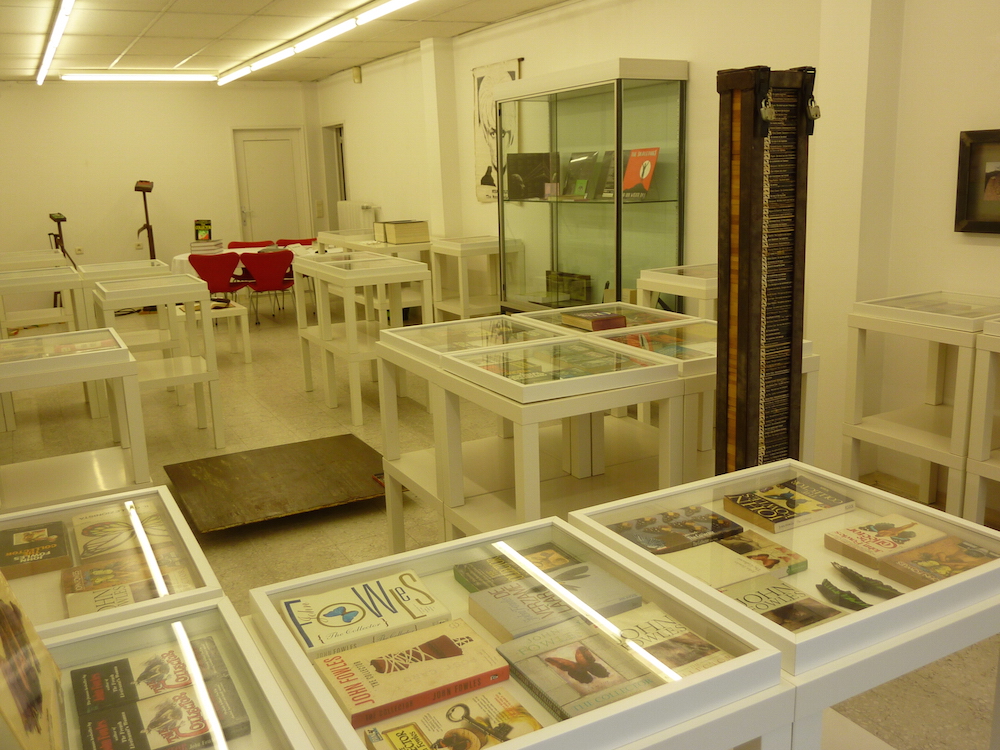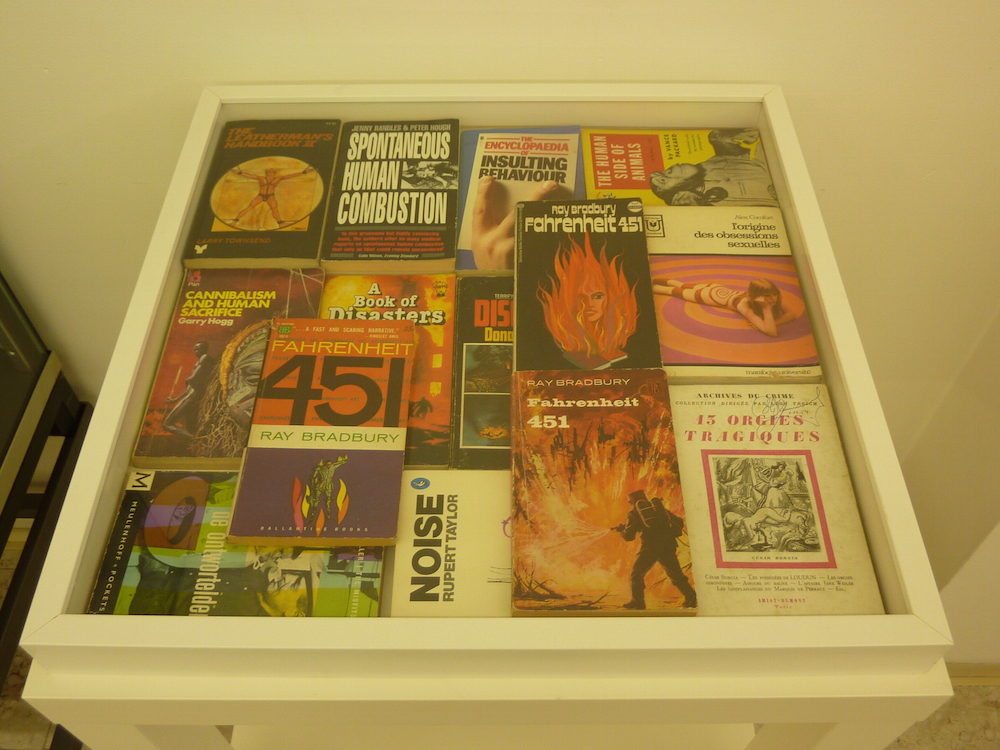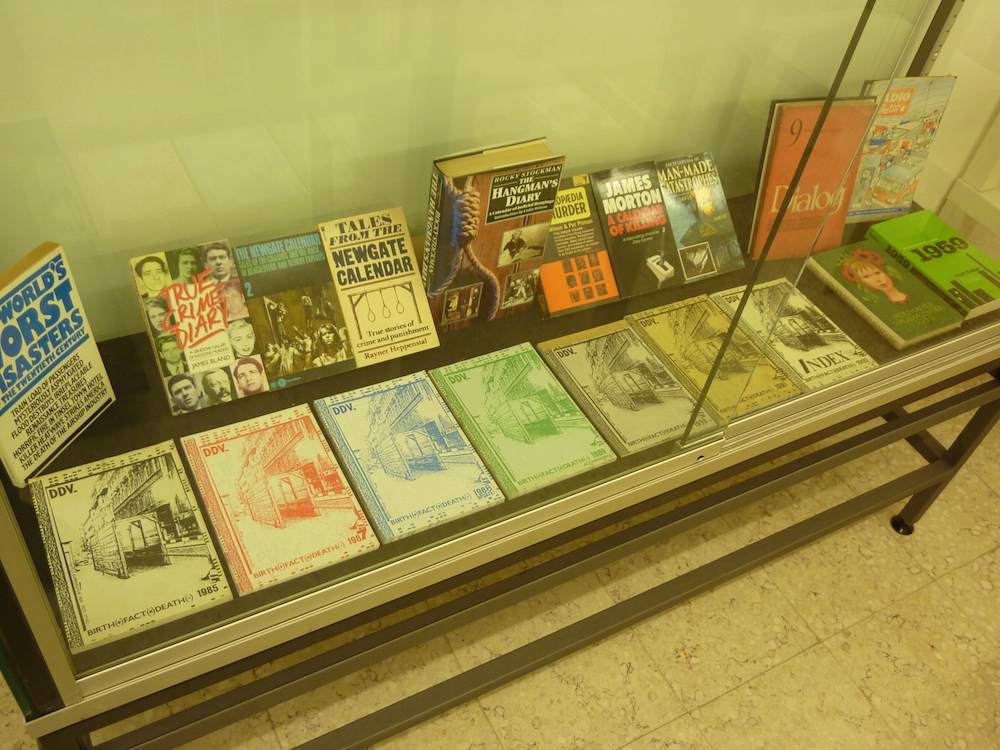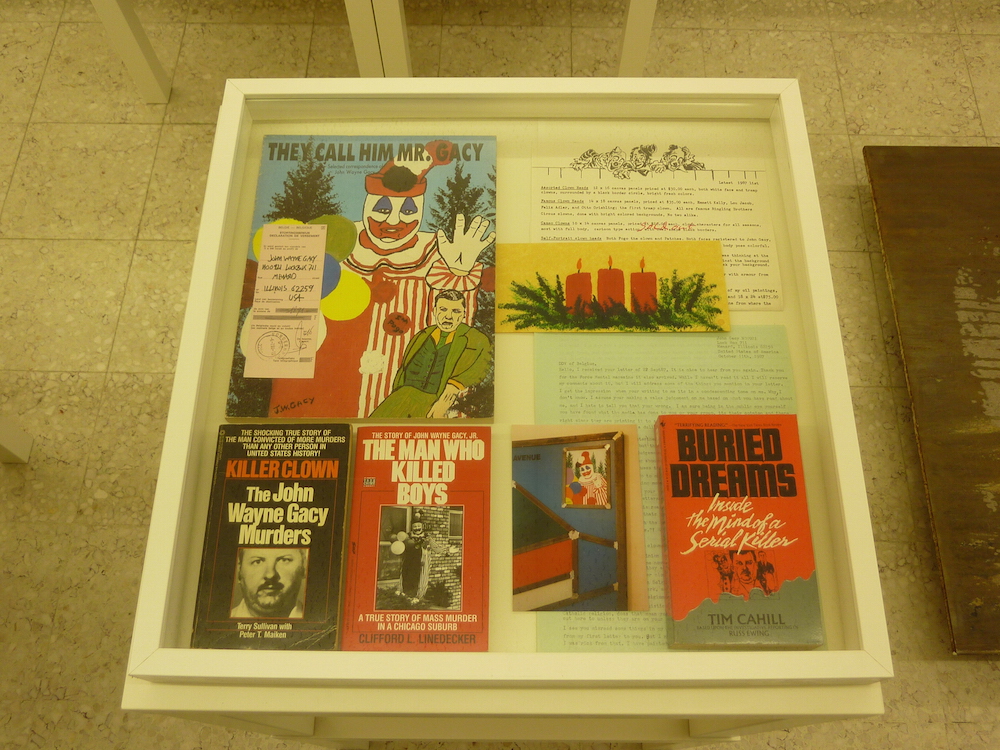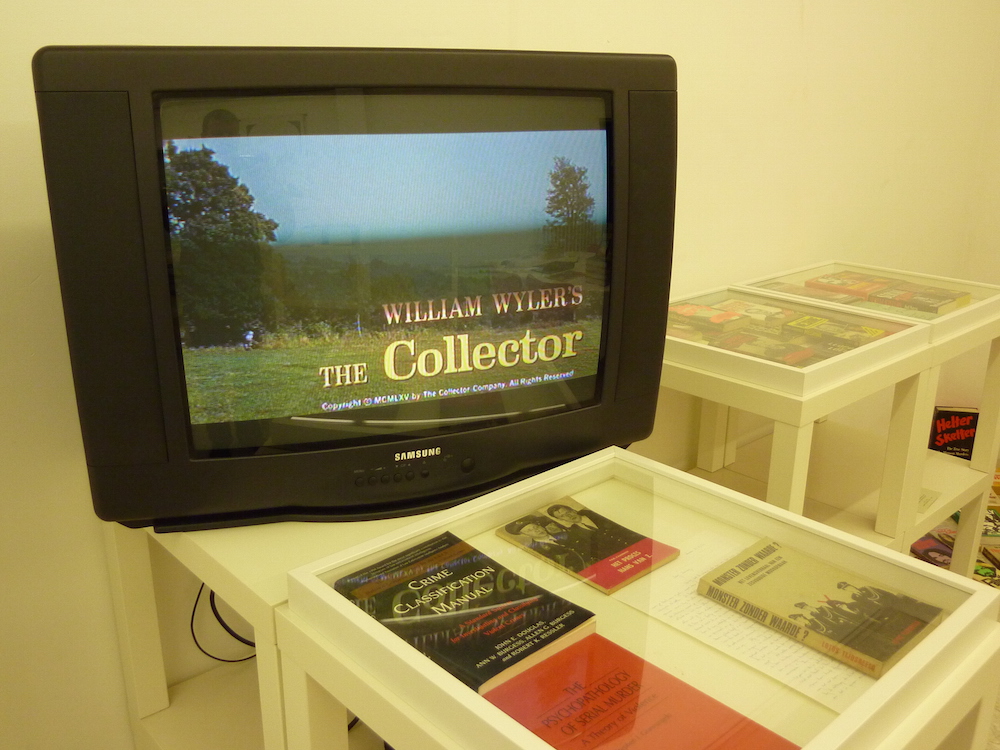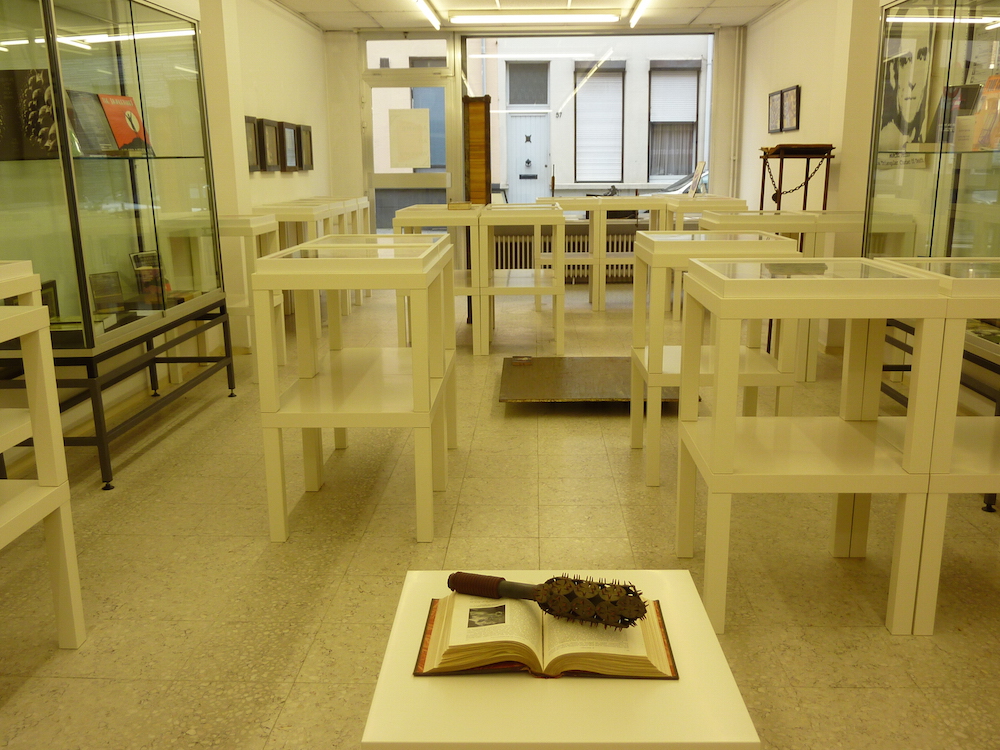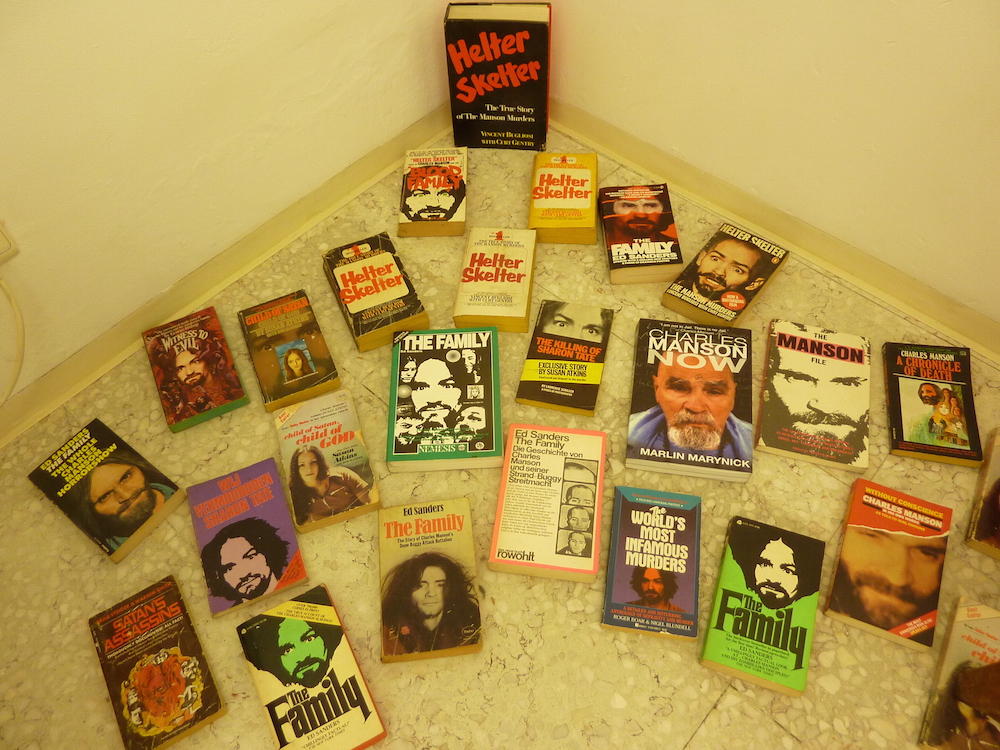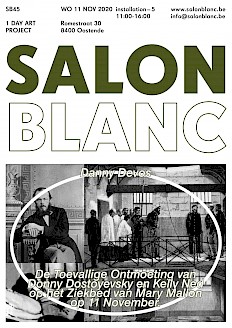'The Collector' is an exhibition by Danny Devos aka DDV focusing on the aspect of books throughout his work.
In general there are four aspects of 'books' in or around DDV's work. Since the 1980's he has made several sculptural works and installations that included books, mostly references to True Crime and criminals. Buth there are also real 'bookworks' such as 'Une Jeune Fille Victime toute une Nuit de Deux Monstres' from 1980 on the cover of a French True Crime magazine, or 'Devos-Kunavichayanont' from 2000 in two 25cm thick volumes.
On the other hand, DDV also has an exquisite collection of books, some ultra rare and obscure True Crime books, but also weird pocket titles such as 'My Life with the Headhunters', 'Thirty Seconds over Tokyo', 'Sex Ads & Answers', a bunch of underground novels, and over 30 different copies of 'The Collector', in various languages and including DVDs of the movie, film cards and the soundtrack on vinyl.
Third there will be a fine selection of non-art books featuring DDV in various ways. This includes the famous 'They Call Him Mr. Gacy' with selected correspondence of executed serial killer John Wayne Gacy, 'A Quiet Man' about the Texas Chain Saw Massacre and Psycho icon Ed Gein, and finally 'Le Poulpe: Saké des Brumes', a 2002 detective novel by Romain Slocombe featuring DDV as a performance artist cum serial killer.
Finally there will be a small historic overview of DDV's own publications such as 'Performan-DDV' in different editions, the complete 'Birth(+) Fact(x) Death(-) Calendar' series and 'Bastard Art Gruppe - Texte und Materialien zur Geschichte der BAG'.
'The Collector' is a 1963 debut novel by English author John Fowles. It was adapted as a feature film of the same name in 1965.
The novel is about a lonely young man, Frederick Clegg, who works as a clerk in a city hall, and collects butterflies in his spare time.
The first part of the novel tells the story from his point of view.
Clegg is obsessed with Miranda Grey, a middle-class art student at the Slade School of Fine Art. He admires her from a distance, but is unable to make any contact with her because of lacking social skills. One day, he wins a large prize in the football pools. He stops working and buys an isolated house in the countryside. He feels lonely, however, and wants to be with Miranda. Unable to make any normal contact, Clegg decides to add her to his “collection” of pretty, petrified objects, in the hope that if he keeps her captive long enough, she will grow to love him.
After careful preparations, he kidnaps Miranda by drugging her with chloroform and locks her up in the cellar of his house. He is convinced that Miranda will start to love him after some time. However, when she wakes up, she confronts him with his actions. Clegg is embarrassed, and promises to let her go after a month. He promises to show her “every respect”, pledging not to sexually molest her and to shower her with gifts and the comforts of home, on one condition: she can’t leave the cellar.
Clegg rationalises every step of his plan in cold, emotionless language; he seems truly incapable of relating to other human beings and sharing intimacy with them. He takes great pains to appear normal, and is greatly offended at the suggestion that his motives are anything but reasonable and genuine.
The second part of the novel is narrated by Miranda in the form of fragments from a diary that she keeps during her captivity. Clegg scares her, and she does not understand him in the beginning.
Miranda reminisces over her previous life throughout this section of the novel, and many of her diary entries are written either to her sister, or to a man named G.P., whom she respected and admired as an artist. Miranda reveals that G.P. ultimately fell in love with her, and subsequently severed all contact with her. Through Miranda’s reflections while confined, Fowles explores a number of philosophical issues, such as the nature of art, humanity and God. At first, Miranda thinks that Clegg has sexual motives for abducting her, but as his true character begins to be revealed, she realises that this is not true. She starts to have some pity for her captor, comparing him to Caliban in Shakespeare’s play The Tempest because of his hopeless obsession with her. Clegg tells Miranda that his first name is Ferdinand (eventual winner of Miranda’s affections in The Tempest).
Miranda tries to escape several times, but Clegg stops her. She also tries to seduce him to convince him to let her go. The only result is that he becomes confused and angry. When Clegg keeps refusing to let her go, she starts to fantasize about killing him. After a failed attempt to do so, Miranda passes through a phase of self-loathing. She decides that to kill Clegg would lower her to his level. She refrains from any further attempts to do so. Before she can try to escape again, she becomes seriously ill and dies. The third part of the novel is narrated by Clegg. At first, he wants to commit suicide after he finds Miranda dead, but after he reads in her diary that she never loved him, he decides that he is not responsible for this outcome and is better off without her. The book ends with his announcement that he plans to kidnap another girl.
'The Collector' has been adapted as film and dramatic play. 'The Collector' is also referred to in various songs, television episodes, and books.
The novel was adapted as a feature film by the same name in 1965. The screenplay was by Stanley Mann and John Kohn, and it was directed by William Wyler. (Wyler turned down 'The Sound of Music' to do it). It starred Terence Stamp and Samantha Eggar. The opening kidnap scenes were shot in Mount Vernon, Hampstead, London. The film’s ending was filmed in Forest Row, East Sussex.
A stage version of the novel (written by John Fowles) was performed in London in the late 1960s or early 1970s. Marianne Faithfull starred as Miranda. It was poorly received by the critics.
Associations with Serial Killers
In several cases since the novel was published, serial killers, spree killers, kidnappers, and other criminals have claimed that 'The Collector' was the basis, the inspiration, or the justification for their crimes.
In 1985, Leonard Lake and Charles Chi-Tat Ng abducted 18-year-old Kathy Allen and later 19-year-old Brenda O’Connor, to satisfy Lake’s fantasy of owning his own ‘Miranda’. Lake is said to have been utterly obsessed with 'The Collector'. He described his plan for using the women for sex and housekeeping in a ‘philosophy’ videotape. The two are believed to have murdered at least 25 people, including two entire families. Although Lake had committed several crimes in the Ukiah, California area, his ‘Operation Miranda’ did not begin until after he moved to remote Wilseyville, California. The videotapes of the murders and a diary written by Lake were found buried near the bunker in Wilseyville. They revealed that Lake had named his plot Operation Miranda after the character in Fowles’ book.
Christopher Wilder, known as a spree/serial killer of young girls, had 'The Collector' in his possession when he killed himself in 1984.
In 1988, Robert Berdella held his male victims captive and photographed their torture before killing them. He claimed that the film version of 'The Collector' had been his inspiration when he was a teenager.
